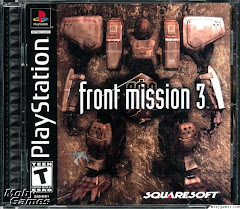Communication: The Player
The principle that is applied to communicating with the player:
- Never underestimate the stupidity in people
- "Jerry Springer" provides examples of people who make poor decisions in their love life.
- "Cops" provides examples of people who make poor decisions that affect their freedom.
- "1001 Ways to Die" self explanatory
Two methodologies stem from understanding "stupidity" to improve my skills as a game developer:
- Teach the mechanics properly
- Always give clear directions
Communication: The Team
The actual means of communication to the player will vary depending on the genre and intentions of game play but include text, dialog, animation, special effects, and sound. Anything that the player can see, hear and feels, with rumble controllers, can be used to convey game play information and mechanics to the player. So in order to communicate effectively to the player, the designer must first communicate to the rest of the team. A designer communicates with the rest of the team through writing documents, verbal discussions and by listening.
Writing
This has to be my least favorite part of being a game designer. It's much more fun and exciting to brainstorm ideas and put the final tuning of a design.. It's work to commit all ideas into text form only to have to debate, rationalize and rewrite the design documents. However what's said verbally can be forgotten. A room full of people can all participate in the same meeting and agree to results and an hour later forget the details. What's committed to text form can be re-referenced. Any misunderstanding can lead to wasted man hours. Ripping something apart to only have to rebuild it a different way morale crushing not to mention inefficient and thus costly.
So be as clear as you can and write under the assumption that the reader has no prior or specialized information to help them understand the document. Basically write the document for the suits in the industry that don't really know or understand the ins and outs of design or game development. It's a fine line of providing enough information to be useful without getting into intricate details that overwhelms the reader.
Discussion
Not every discussion needs to take place in a meeting on an official basis. Sometimes taking the time to have a 5 minute chat in person can save days and weeks worth of work. Understanding basic ideas isn't enough when it comes to implementation of a design and the effect of lost man hours. A programmer or artist may read the design and understand the basic principle. However they may not understand the design inside and out and therefore may execute the task "incorrectly" due to misunderstandings. So it's a mistake to leave the other departments alone until their tasks are finished. Simply stopping by their desk and asking if they need anything, have any questions or would like any feedback before they steer too far off course.
Listening
Simply listening to other opinions and ideas goes a long way in the team trusting the decisions the designer makes. If I'm willing to listen to game play ideas and critiques from the other departments and from different levels of experience then the team understands and gains confidence that the decisions I make are well thought out and not knee jerk reactions.
Although an idea as first presented won't work, its still a new way of looking at a problem, or an outside the box solution. Make adjustments to the idea to get it to either feasible or to align it to the direction of the game play vision and target audience. That's the strength of working in a team environment. Collaborative solutions or game play mechanics that couldn't be conceived by the lone individual. The point is every idea can have value but you won't ever get there if you never listen..
Two reasons why ideas never make it into game play:
- Resources - Most developers don't enjoy the luxury of unlimited time and budget so manpower and time constraints prevent most ideas from becoming an in-game feature.
- Vision - The idea may be a great, in a vacuum or on a different kind of game, but may not mesh with the current project or target audience.
Everything in Moderation
On the flip side, communicating more doesn't equate to communicating more effectively. If the player feels like you're holding their hands too much and provide too much information, it breaks their immersion and overwhelms them detracting them from enjoying the game. On the same token, your team doesn't need you watching over their shoulder every second of the day to make sure everything is done right. As a designer you want to communicate but not to unrealistic proportions that it takes away the fun in playing and developing games.
The second pillar of my fundamental truths in game development is Communication. Without gamers there would be no games industry. Proper communication to the player is vital for understanding and enjoyment. Games can't be made without a team. So making sure the team knows the vision allows them to properly do their jobs. Thus stressing the importance of communication to the player and to the team is essential for most effective results. It's a soft skill that plays a bigger role in the success of game development.I want to make the best games I can make. Thus making communication my real job.



















Great to see you doing well Marc! You have some good insight and I'm looking forward to reading more and seeing what's actually inside that brain housing group of yours!
ReplyDeleteImp/Chuck